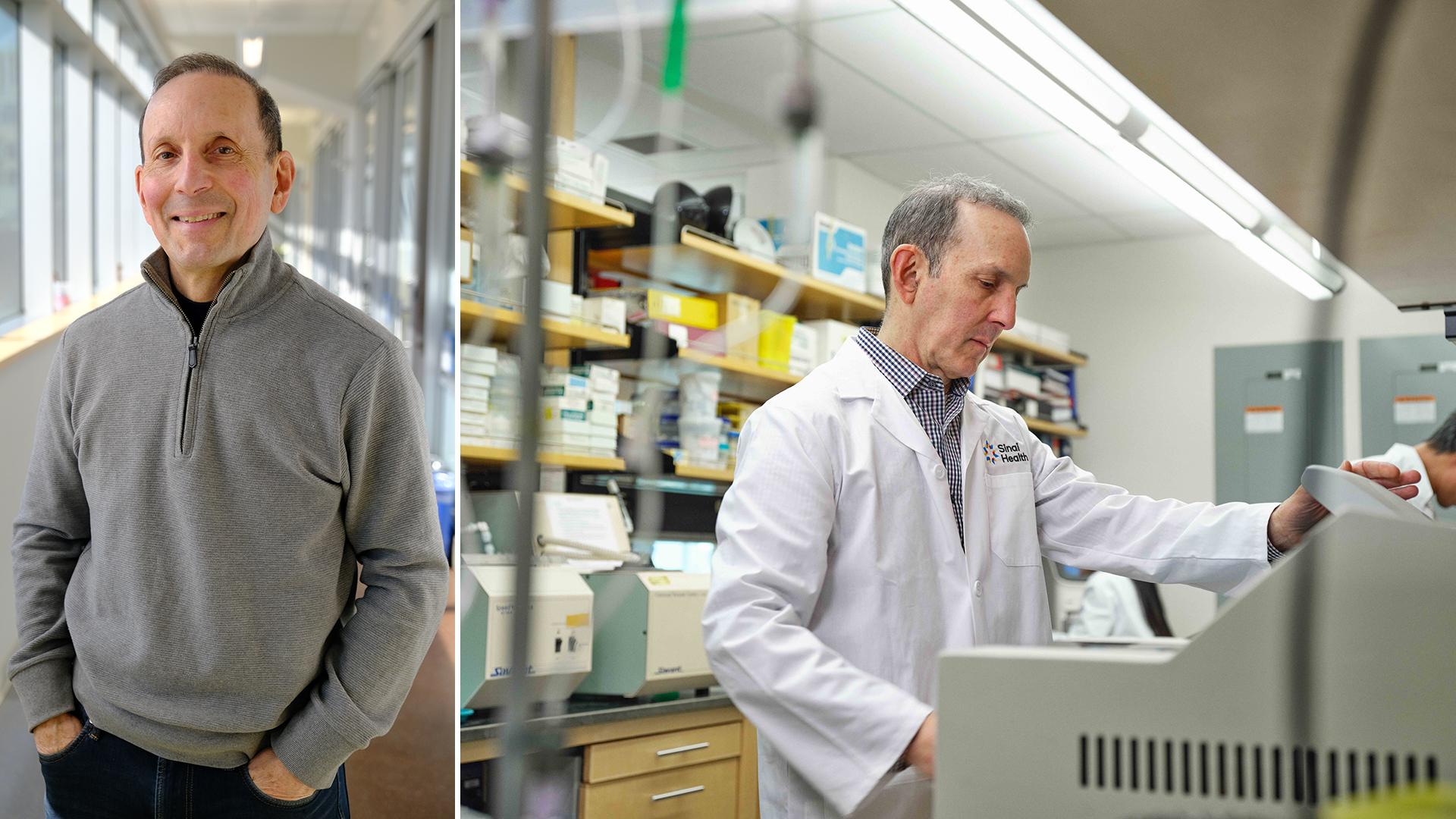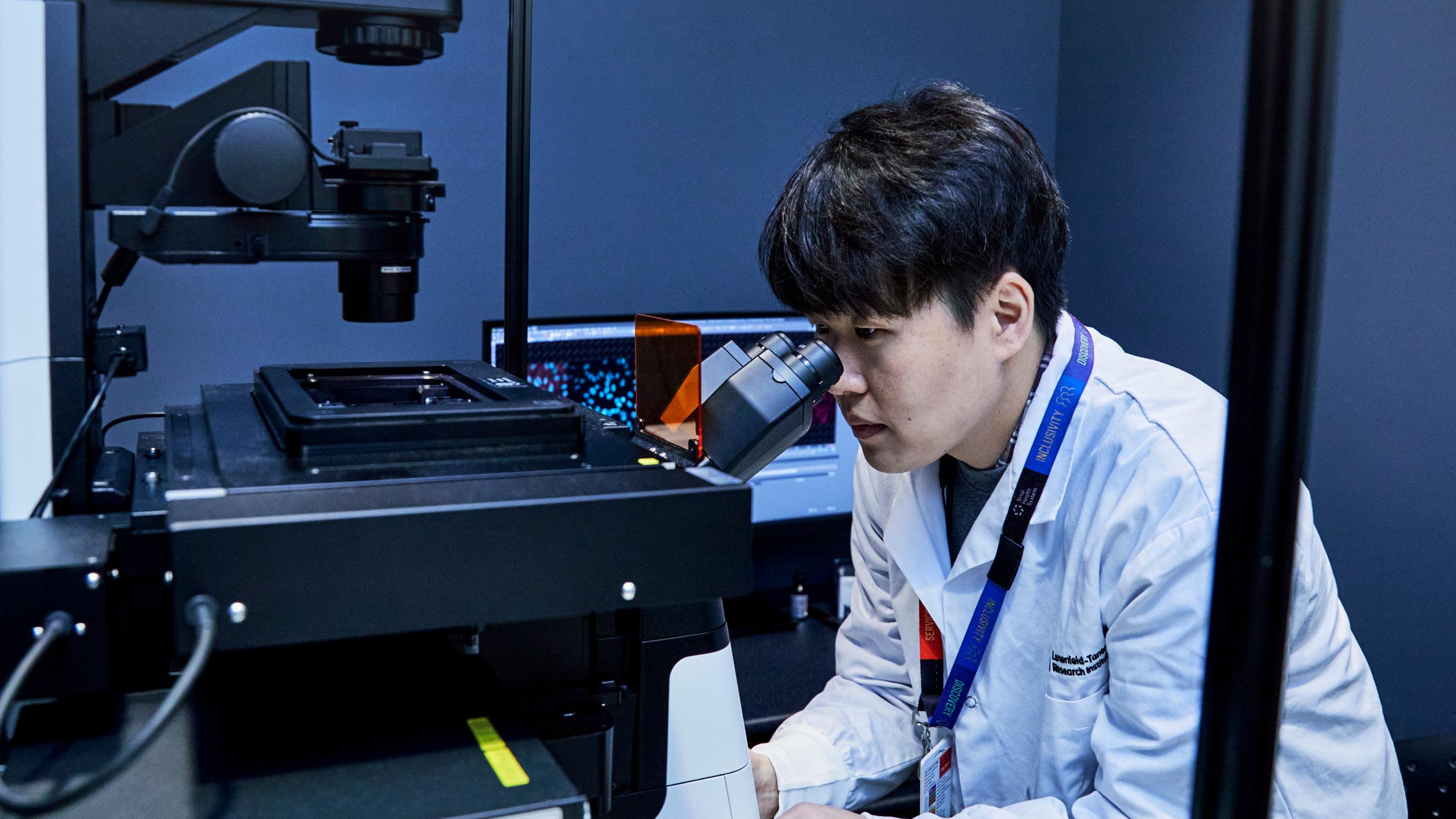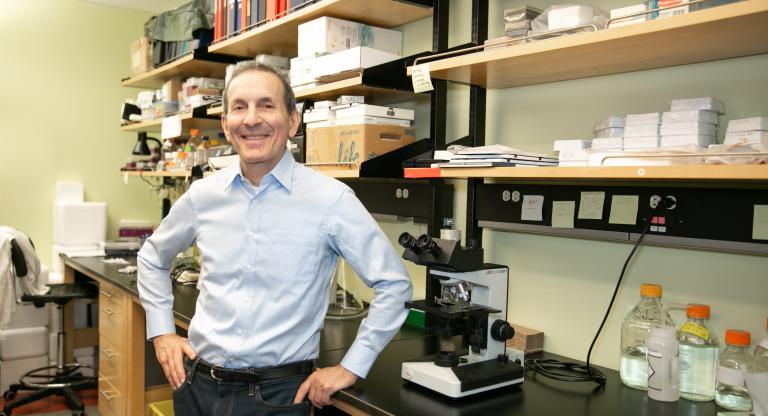"The greatest reward for a physician is to improve people’s health"

Dr. Daniel Drucker is no stranger to award ceremonies, but a recent Hollywood gala was something else.
The Canadian scientist, renowned for pioneering research that sparked Ozempic and other GLP-1 medicines for diabetes and obesity, was honoured at the globally broadcast ceremony that celebrates discovery science and inspires the next generation of scientists.
Dr. Drucker, a Senior Investigator at the Lunenfeld-Tanebaum Research Institute (LTRI), Sinai Health, was in Los Angeles to receive the Breakthrough Prize in Life Sciences for his groundbreaking work on glucagon-like peptide 1 (GLP-1).
The Breakthrough Prize is the largest international science prize, with $3 million awarded to the world’s top scientists working in fundamental sciences at the awards ceremony often referred to as the “Oscars of Science”.
“It feels wonderful to be recognized, not just for me personally, but for all my co-workers and trainees throughout my career. For a physician, there is no bigger reward than changing people’s lives for the better and the Breakthrough Prize reflects that,” said Dr. Drucker, who is also a University Professor of Medicine at the University of Toronto.
Dr. Drucker was recognized for GLP-1 discoveries alongside Dr. Joel Habener, Harvard University, Dr. Svetlana Mojsov, Rockefeller University, Dr. Jens Holst, University of Copenhagen, and Dr. Lotte Knudsen, Novo Nordisk.
Dr. Anne-Claude Gingras, Director of LTRI and Vice President of Research for Sinai Health, was present at the award ceremony to celebrate with Dr. Drucker.
“The Breakthrough Prize is a thrilling and highly deserved recognition of Dr. Drucker who dedicated his career to understanding how GLP-1, and the medicines based on it, work in the body. Dr. Drucker's work exemplifies the transformative power of discovery research in advancing medicine for millions of people around the world. We are incredibly proud to count him among our distinguished team at Sinai Health, and I extend my heartfelt congratulations to him."
Dr. Drucker’s accolades also include the Canada International Gairdner Award, the Wolf Prize in Medicine, and a place among TIME’s most influential people for 2024.
The power of discovery research
Named The Science Breakthrough of the Year for 2024 by the journal Science, the GLP-1 medicines burst into public consciousness, following evidence of their benefits for weight loss and heart health, alongside their potential in alleviating symptoms of various chronic diseases. This growing awareness has intensified the need to understand precisely how these drugs function at the cellular and molecular levels.
These compounds mimic the action of GLP-1, which is a hormone produced in the gut that impacts different organs. GLP-1 promotes insulin secretion in the pancreas, providing a key treatment strategy for diabetes. It also acts on the brain to reduce appetite, which helps with losing weight. Additionally, GLP-1 medicines are beneficial for cardiovascular health, with fewer heart attacks and strokes among patients. Each of these medical breakthroughs traces directly back to the foundational studies conducted in Dr. Drucker’s laboratory.
Despite global fame, Dr. Drucker remains committed to meticulous, incremental scientific progress. “Science consists of a few good hours on a few good days, and sometimes bad months and years,” says Dr. Drucker who holds the Banting and Best Diabetes Centre Novo Nordisk Chair in Incretin Biology.
“We don’t always get exciting results. Our approach is to ask good questions and then answer the questions. And the answers to the question might occasionally be disappointing, but as long as we do the experiment rigorously, we've learned something valuable,” he added.
GLP-1, inflammation and cancer
The Drucker lab is now delving into the mechanisms by which GLP-1 confers broader health benefits beyond weight loss and blood sugar control. Initially observed in people with type 2 diabetes using GLP-1 medications over long periods, the potential benefits of GLP-1 medicines are now being investigated in clinical trials for Alzheimer’s disease, arthritis, substance use disorders and other conditions.
“There’s something about GLP-1 that mitigates a lot of chronic diseases that people have, and we really need to understand better how that works,” he said.
Recently, Dr. Drucker’s team demonstrated that GLP-1 medicines act on the brain to reduce inflammation across the body in animal models. This finding could explain some of the broad health benefits of GLP-1, as many chronic diseases are made worse by age-related inflammation. The team is pinpointing the specific brain regions targeted by GLP-1 and how it communicates with the immune system to reduce inflammation in various organs.
Another exciting new research area is the potential interaction between GLP-1 and cancer. Given the established links between obesity, increased cancer risk, and poorer outcomes, Dr. Drucker emphasized the importance of metabolic management in cancer treatment.
“Many oncologists are cautiously optimistic about the use of GLP-1 medicines for managing metabolic dysregulation, which contributes to suboptimal outcomes in cancer treatment,” he explained, highlighting that maintaining a healthy weight is crucial not only for cancer prevention but also for improving outcomes during treatment.
The lab is investigating whether GLP-1 can reduce the development of cancer in preclinical models focusing on breast and colon cancers. The aim is to determine if GLP-1 medicines can reduce cancer growth and possibly augment the efficacy of traditional treatments by potentially sensitizing the immune system to target and eliminate cancer cells.
The discovery of GLP-1
Dr. Drucker made his first seminal discovery of GLP-1 action in the mid-1980s while he was a research fellow in Dr. Joel Habener’s lab at Massachusetts General Hospital in Boston. Having moved to Boston in the mid 1980s with his wife, Dr. Cheryl Rosen, who was a dermatology research fellow, and their young child, balancing research and family life was a challenge.
Dr. Drucker recalls how he and other fellows with young children would leave the lab in the early evening to spend time with their families, only to return later at night to continue their experiments. The lab was well funded and had the latest equipment available at the time for researchers to use as they explored their ideas independently.
The efforts paid off. Working collaboratively, Dr. Drucker found that GLP-1 is truncated into a shorter version crucial for its function. In a series of key experiments using cultured cells from various organs, including the insulin-producing islet cells from the pancreas, Dr. Drucker was the first to highlight GLP-1’s role in directly stimulating insulin secretion from islet cells. He showed that it prompts insulin secretion in response to elevated glucose levels, a finding that suggested GLP-1 could be used to stimulate insulin production in patients with type 2 diabetes, whose natural insulin production is impaired.
While the potential of GLP-1 for treating diabetes was recognized early on, Dr. Drucker is amazed by the profound impact it has had on health care. He says, “When we were doing the early work on GLP-1, none of us could have imagined the extraordinary additional effects it would have on people’s health today.”
From bench to bedside
The discovery of GLP-1 was groundbreaking but translating it into a viable medication was fraught with challenges. "People got sick when initially injected with it, they threw up, and the beneficial effects didn't last very long," Dr. Drucker recalled. He even shared his concerns with his friend Dr. Holst, sometimes doubting whether GLP-1 could ever be developed into a drug.
The path to regulatory approval spanned two decades, primarily because GLP-1 quickly broke down in the body, necessitating innovations to enhance its stability and extend its duration. Dr. Drucker's contributions were also crucial during this phase. In the mid-1990s, Dr. John Eng from New York discovered that a related hormone, called exenatide and isolated from a venomous lizard, the Gila monster, mimicked the actions of GLP-1. Dr. Drucker set out to clone the lizard genes for exenatide and GLP-1 to ascertain their relationship, which required transporting a lizard from a Utah zoo to Toronto with assistance from staff at the Royal Ontario Museum. After more than a decade of discovery and clinical research, the lizard-derived exenatide became the first GLP-1-based medication approved in 2005 for treating type 2 diabetes.
Dr. Drucker's research has impacted not only millions of people with diabetes and obesity but also those living with short bowel syndrome, a rare and severe disorder characterized by an abnormally short intestine that impairs nutrient absorption, necessitating intravenous nutrient delivery. Beyond his work with GLP-1, Dr. Drucker also discovered the actions of GLP-2, another peptide encoded by the glucagon gene. His studies demonstrated that GLP-2 could stimulate intestinal growth, offering new hope for treating short bowel syndrome using a GLP-2 analogue, teduglutide, discovered in the Drucker laboratory. Teduglutide, approved in 2021, became the first approved chronic treatment for short bowel syndrome in adults and children. Real-world studies have since revealed that over 20 per cent of patients treated with teduglutide can stop intravenous nutrition and resume normal eating and daily activity.
Dr. Drucker also studied the properties of an enzyme called DPP-4, responsible for the breakdown of both GLP-1 and GLP-2. This work was pivotal in advancing the development of medicines for type 2 diabetes such as DPP-4 inhibitors, that prevented the breakdown of GLP-1.
For Dr. Drucker, the personal testimonies of people whose lives are transformed by these medicines surpass any accolade. "It's profoundly emotional when I hear people say how these treatments have allowed them to reclaim their lives," he shares.
Family first
Outside the lab, Dr. Drucker enjoys many sports, including golfing, reading, and, most importantly, spending time with family. Together with Dr. Rosen, a dermatologist and Clinician Investigator at Toronto Western Hospital, the couple balances their work obligations with family time, especially with their six grandchildren and another on the way.
The three generations gather at least once a week to share a meal, enjoy each other’s company, and reflect on the positive aspects of life. Dr. Drucker credits Dr. Rosen with keeping him grounded amidst the ups and downs of his scientific career.
With such an illustrious career, it may come as a surprise that to him science is, ultimately, just a job.
"It’s a great job, and I love it, but at the end of the day, it’s just a job. If I had to choose between my job and my family, I would always choose family," he states.
Thankfully, he has not had to face that difficult choice.












